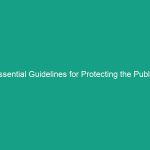Introduction
Good morning team! Today, we’re diving into an essential topic that not only affects our workplace but also impacts our overall Safety and efficiency: Essential Guidelines for Promoting Team Bonding in HSE Practices. This discussion is vital because fostering a strong team bond can enhance our health, safety, and environmental (HSE) practices significantly.
When we work closely together, we become more aware of each other’s strengths and weaknesses, which helps us identify potential Hazards more effectively. Let’s explore how we can promote teamwork in our HSE practices and why it matters for all of us.
Understanding Essential Guidelines for Promoting Team Bonding in HSE Practices
Team bonding in HSE practices refers to the collaborative effort of employees to prioritize Safety and compliance within the workplace. It’s about creating a culture where everyone looks out for one another and actively participates in safety protocols.
This bonding is crucial because it leads to improved communication, efficiency, and morale, ultimately resulting in a safer work Environment. A common misconception is that safety is solely the responsibility of management; however, it’s a shared responsibility that requires team involvement to be effective.
Key Hazards, Risks, and Safety Considerations
When teams fail to bond effectively in safety practices, several hazards can emerge. Here are some key risks associated with poor teamwork in HSE:
- Miscommunication: Lack of clear communication can lead to misunderstandings regarding safety protocols.
- Inconsistent Practices: When team members work in silos, safety practices can vary, leading to dangerous situations.
- Neglect of Safety Checks: Team members may overlook safety checks if they feel isolated from one another.
Real-world consequences of ignoring these risks include workplace accidents, injuries, and even fatalities. The impact of such incidents can be devastating—not just for the individuals involved but for the entire team and company.
Best Practices, Procedures, & Actionable Advice
To enhance team bonding in our HSE practices, consider the following Best Practices:
1. Regular Safety Meetings
Hold regular safety meetings to discuss protocols, hazards, and personal experiences. These meetings should be interactive, allowing employees to share their thoughts and suggestions. Here’s how to conduct an effective meeting:
- Set a clear agenda focusing on safety topics.
- Encourage open discussion and questions.
- Follow up on previous meeting discussions to show that employee input is valued.
2. Team-Building Activities
Organize team-building activities that focus on safety Training. For example, you can conduct safety drills in a fun and engaging manner. This not only reinforces safety protocols but also strengthens team relationships.
3. Safety Buddy System
Implement a safety buddy system where employees pair up to check in on each other’s adherence to safety practices. This fosters accountability and support among team members.
4. Recognition and Reward
Acknowledge and reward team members who exemplify excellent safety practices. This could be through monthly awards or shout-outs during meetings. Recognition boosts morale and encourages others to follow suit.
5. Training and Development
Invest in ongoing safety training that includes team exercises. This ensures that all employees are on the same page concerning safety Procedures and fosters collaboration.
Regulations, Standards, and Compliance
It’s essential to stay informed about relevant OSHA Regulations, ISO Standards, and company-specific safety protocols. Compliance is not just a legal obligation; it’s crucial for protecting everyone’s health and safety at work.
Understanding these regulations helps employees appreciate the importance of safety and the role they play in maintaining a compliant work environment. Here’s why compliance matters:
- Protects Employees: Compliance reduces the risk of accidents and injuries.
- Avoids Legal Issues: Non-compliance can lead to costly fines and legal problems.
- Enhances Reputation: A commitment to safety improves the company’s reputation, attracting talent and clients.
Employee Engagement & Discussion
Now that we’ve discussed various strategies for promoting team bonding in our HSE practices, I’d like to open the floor for discussion. Consider these questions:
- What safety challenges have you encountered related to teamwork?
- How can we improve our current safety communication methods?
- What team-building activities do you think would benefit us most?
Your insights are invaluable, and together we can make our workplace safer.
Conclusion & Key Takeaways
In summary, promoting team bonding in HSE practices is not just beneficial but essential for our safety and well-being at work. By implementing regular safety meetings, team-building activities, a buddy system, and recognizing each other’s efforts, we can build a stronger, more cohesive team committed to safety.
Let’s remember that safety is a shared responsibility, and every one of us plays a crucial role in creating a safe work environment. Thank you all for your attention and commitment to our safety culture. Let’s prioritize safety today and every day!


